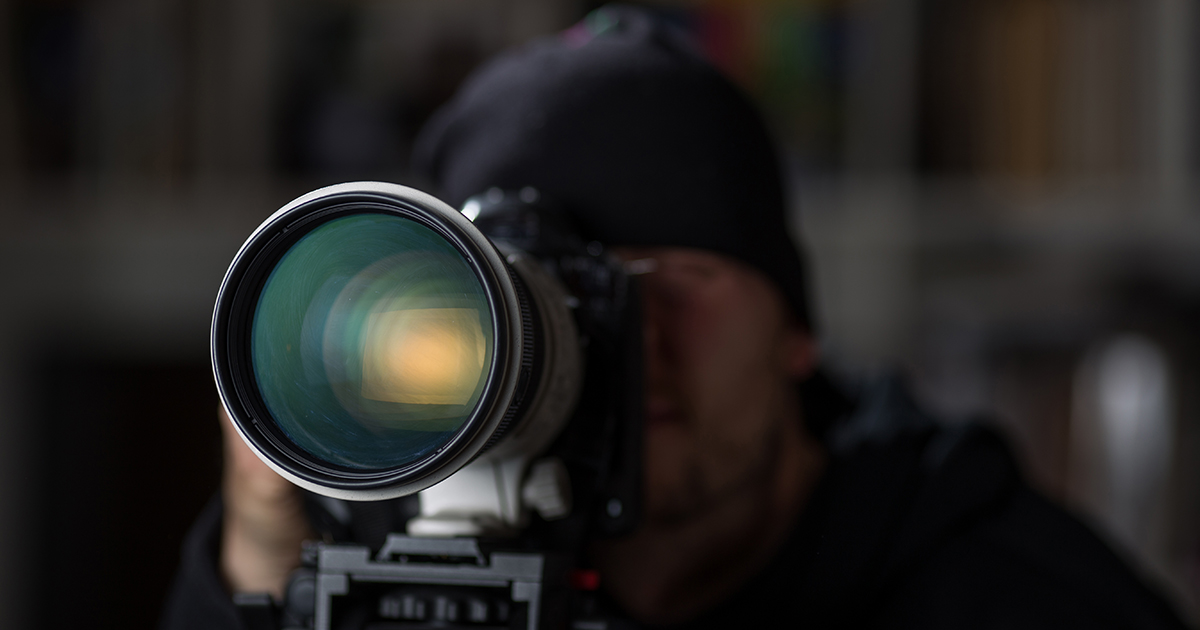As a covert surveillance photographer, one of the most important aspects of your job is understanding the exposure triangle. The exposure triangle is the relationship between the aperture, shutter speed, and ISO, which together determine the exposure of your photographs. In this blog post, we will explain each of these elements and how they work together to create a well-exposed photograph.
Aperture
The aperture is the opening in the lens through which light enters the camera. It is measured in f-stops, with smaller f-stop numbers indicating a larger opening and larger f-stop numbers indicating a smaller opening. The aperture affects two main aspects of your photograph, the amount of light that enters the camera and the depth of field.
The amount of light that enters the camera is also affected by the aperture. A larger aperture (smaller f-stop number) will allow more light into the camera, while a smaller aperture (larger f-stop number) will allow less light into the camera.
Depth of field refers to the area of the photograph that is in focus. A larger aperture (smaller f-stop number) will create a shallow depth of field, with only the subject in focus and the background blurred. A smaller aperture (larger f-stop number) will create a deeper depth of field, with the subject and more of the background in focus.
Shutter Speed
The shutter speed refers to the amount of time the camera’s shutter remains open, allowing light to enter and expose the camera’s sensor. Shutter speed is measured in seconds or fractions of a second. The shutter speed affects two main aspects of your photograph: motion blur and the amount of light that enters the camera.
Motion blur refers to the blurring of objects in motion. A slower shutter speed will create more motion blur, while a faster shutter speed will freeze motion and create a sharper image.
The amount of light that enters the camera is also affected by the shutter speed. A slower shutter speed will allow more light into the camera, while a faster shutter speed will allow less light into the camera.
ISO
The ISO refers to the camera’s sensitivity to light. It is measured in ISO numbers, with higher ISO numbers indicating greater sensitivity to light. The ISO affects two main aspects of your photograph: image noise and the amount of light that enters the camera.
Image noise refers to the grainy or speckled appearance of a photograph. A higher ISO will create more image noise, while a lower ISO will create less image noise.
The amount of light that enters the camera is also affected by the ISO. A higher ISO will allow more light into the camera, while a lower ISO will allow less light into the camera.
Putting It All Together
The aperture, shutter speed, and ISO work together to create a well-exposed photograph. If you want a shallow depth of field, you would use a larger aperture (smaller f-stop number). If you want to freeze motion, you would use a faster shutter speed. If you want to reduce image noise, you would use a lower ISO.
However, adjusting one element of the exposure triangle will affect the other two. For example, if you increase the shutter speed to freeze motion, you may need to increase the ISO or use a larger aperture to allow more light into the camera. It’s important to experiment with different combinations of aperture, shutter speed, and ISO to find the right balance for each photograph.
In conclusion, the covert surveillance photographer must have a good understanding of the exposure triangle to capture high-quality images under operational conditions. By adjusting the aperture, shutter speed, and ISO, you can create the desired depth of field, and reduce motion blur and image noise but this then has to be applied to shooting through cover, during the hours of darkness and capturing moving subjects and any significant associates. All whilst remaining covert and often with very limited opportunities to get the shot!
This is why at Summis Global we believe training in the techniques of photography and camera operation are a critical foundation to build your operational experience on.
Next week we will look at some surveillance photography scenarios and go through some handy hints and tips to give you the best chance of capturing high-quality images under operational pressures.

